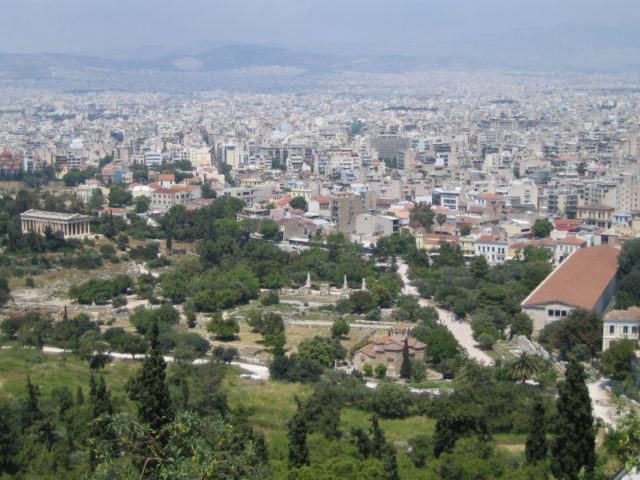Archaeologists reacted with horror and confusion when they first discovered the skeletons of 450 infants at the bottom of a well in the middle of Athens. Researchers now claim to have solved the mystery of why so many babies were dumped in a well in the Athenian agora.

After the remains were analyzed, it seems all but one of the babies died of natural causes. They were dated somewhere between 165BC and 150BC at the end of the Hellenistic period in Greece. It appears that only three of the infants managed to live beyond one week while it is thought a third of them died of meningitis, most likely due to an infection after cutting the umbilical cord. Some died of dehydration while others died of various childhood diseases.
The remains were first unearthed in an excavation in 1931, and scientists now believe the bodies of the infants were dumped rather than being buried since they were not seen as “full citizens”.
It was said by Professor Susan Rotroff, a researcher at the department of classics at Washington University in St Louis, and Professor Maria Liston, an anthropologist at the University of Waterloo in Ontario, Canada, that it appeared they were victims of a bizarre practice in Ancient Greece at the time.
It took ten days after birth for babies to gain citizenship, only after a special ceremony where they were given their name and the head of the household decided if they wanted to raise them or not. If the infant died before they were granted citizenship, they were dumped rather than being buried.

The bodies were disposed of by midwives down the well because it was down a blind alley near the agora; was easily accessible but out of sight. “Four hundred fifty dead babies — that’s a lot of grieving parents and sorrow,” says Liston.
The skeletons were first discovered in 1931 after a team of archaeologists supervised by T. Leslie Shear began excavating the Athenian agora at the center of the city. Among the temples and statues, they discovered the well cut into the bedrock with 450 human infant skeletons inside. At the time archaeologists thought the infants had been the victims of a plague or mass infanticide and had then been flung down the well.
The new research, however, has shown neither of these theories was correct and reveals the society in Athens at the time in a new repugnant light. Professor Liston stated that over half of the skulls showed marks caused by a meningitis infection.
One of the bodies – which belonged to an 18-month-old – showed signs of frequent abuse – making it perhaps the oldest case of child abuse ever discovered. The toddler had multiple fractures throughout its body with different degrees of healing. It seems a jaw fracture was the final abusive act that this poor child had to endure.
Last year at a conference, Professor Liston stated that: “Abuse often is, and was, a hidden crime, and in antiquity its victims may have been disposed of outside of formal cemeteries, making recovery and documentation difficult. The oldest infant from the “Baby Well” found in the Athenian Agora excavations provides evidence of a possible case of child abuse from the 2nd-century C.E.”
The remains of around 150 dogs were also found in the well by archaeologists, which researchers believe may have been sacrificed.
